El Salvador – infamous for being overlooked by backpackers making their way down the Gringo Trail of Central America and for a questionably dicey narrative perpetuated in the media. Salvadorians will be the first to admit that they’ve had their struggles with crime, but realistically besides maybe Bhutan, who hasn’t? That being said, the government has intervened in an extreme and efficient manner. To be clear, tourists were never the target of this, mainly gang-related crime, and now, the country in general is extremely safe for both tourists and locals alike. I may even argue that this may be the safest country in Central America. You’ll hear time and time again how nice the local people are and I can attest. They are some of the most genuinely kind people I’ve met along my travels. Another selling point is that tourism infrastructure is relatively new and growing. You can find just about any accommodation to fit your budget and crowds are essentially nonexistent. This, combined with the ability to drive or take a bus between any two destinations within a few hours, makes exploring all that this beautiful country has to offer easy and comfortable. As their rebranding says, “Don’t skip El Salvador”, or better yet, actively add it to your bucket list.
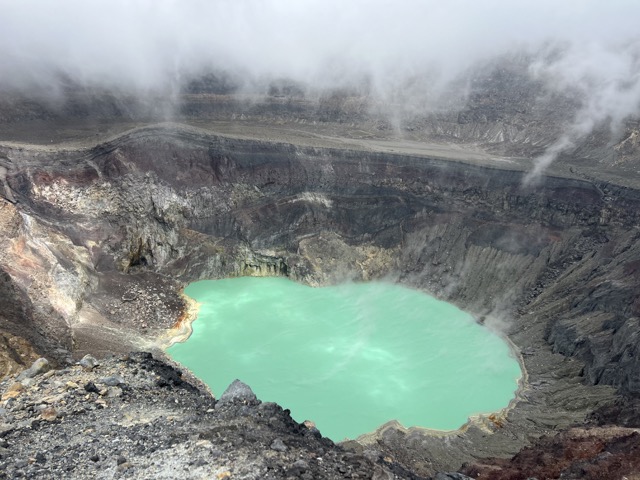
Itinerary
Timeframe:
Within 10 days you can comfortably hit all of the hot spots. And if you’re taking advantage of the surf, stay an extra week or two on the coast, or however long your heart desires and your PTO or budget allows. Accessible by land or boat from Nicaragua, Honduras, and Guatemala, and with direct flights from both North and South America, El Salvador can be a feasible destination for a quick vacation or added onto a Central American travel route.
Where to go:
The Beach: El Tunco or El Zonte are two popular beach towns to base yourself out of. El Zonte being the more laidback out of the two. Though during the week, El Tunco is pretty relaxed as well. There’s an emphasis on waking up for a sunrise surf over staying out all night drinking during the week, with the weekends much more party oriented. Read more about the beach here.
Santa Ana: Santa Ana is a popular place to stay in order to access Volcán Santa Ana and Ruta de las Flores. It’s urban, and to be honest, there’s not much to see within the city itself. Book La Casa Verde ahead of time if looking for a really friendly, comfortable hostel with dorms and private rooms. The have a great included breakfast as well. It’s a bit of an oasis within the city. We enjoyed browsing, tasting, though not really enjoying the street food around the main square, and admired their pure dedication to fast food pizza such as Pizza Hut and Papa Johns.
Lago Coatepeque: You can visit Lago Coatepeque one of two ways. The first being to stay at a nice hotel or hostel on the lake for a night. Kayak, jet ski, just chill with a view. If you’re with a group, it may even be fun to arrange some time on a boat. The lake at times isn’t the cleanest when you take a look up close, especially when there is algae, so swimming isn’t always tempting. Luckily most hotels have pools of their own to cool off in as well as their own restaurants. The second way to visit the lake is if you chose to go with a tour of Volcán Santa Ana, they typically will stop at the lake on the way back.
Ruta de las Flores: This is a road named due to the blooming of flowers during the months of November through February. As I went in March, there weren’t many flowers but it’s still a scenic road nonetheless, especially in contrast to the more urban area of Santa Ana. The best part of this road is that it connects a few local towns to explore. Read my blog about it here for a deeper dive into the personalities of each of these towns.
San Salvador: I didn’t go to San Salvador, and it’s not really necessary to stay in San Salvador at any point as not even the airport is there. That being said, there was a guy in my hostel that had to go to San Salvador to see a doctor, and ended up really enjoying it. He went to a market, saw a church, and took a walking tour. In the past, there were some safety concerns but it seems to be much better now.
Sample Itinerary:
El Tunco (6 nights): Consecutive days of surfing. It’s a small town and a nice place to make some friends. After only a day or two you’ll surely be running into familiar faces during the day and out on the water. If you have no interest in surfing, 2-3 nights would be sufficient.
Lago Coatepeque (1 night): Catch up on some rest, lounge with a view of the lake, take out a kayak or paddle boards.
Santa Ana (1 night): A city, smaller than San Salvador but urban nonetheless. We used the local bus from Santa Ana to climb Volcán Santa Ana, and then took an Uber to Ruta de las Flores the next day. Some travelers rent scooters in Santa Ana which they use to drive along the Ruta de las Flores.
Ruta del las Flores/Juayúa (3 nights): A great town to base yourself out of to see the Ruta de las Flores, waterfalls, and hot springs in the area. It’s much more quaint than Santa Ana.
Optional: El Tunco (2 nights): We ended our trip back in El Tunco as the friend I was traveling with hadn’t been to the beach yet. By that time, it was nice to reunite with some people that I had met the week prior, revisit some of my favorite healthy cafes, and be by the ocean. From the beach, you can easily access the airport by Uber, taxi, or shuttle.
Modifications:
- If surfing is your main objective, it would be reasonable to base yourself from the beach and take day trips to waterfalls, other beach towns, Volcán Santa Ana, and coffee plantations. I would just plan to spend a bit more money and time on tours/transportation as this will be the most optimal way to get to all of these places for a day trip or alternatively renting a car.
- Along that note, El Tunco is surely not the only beach town to stay in. El Zonte is also very popular for having more advanced level waves and an extremely laidback town. The beach is apparently more beautiful and they seem to have a few great restaurants. I would consider staying here for a few days on a future trip
- If looking for the most cultural and local experience, make San Salvador a stop for sure! Unless taking local buses between the beach and Santa Ana or Ruta de las Flores, you probably won’t otherwise see San Salvador
- When planning your itinerary, if you want a bit of nightlife, plan to be in El Tunco for Friday and Saturday night. If a food festival is more up your alley, then plan to stay in Juayúa as there is a food festival every weekend
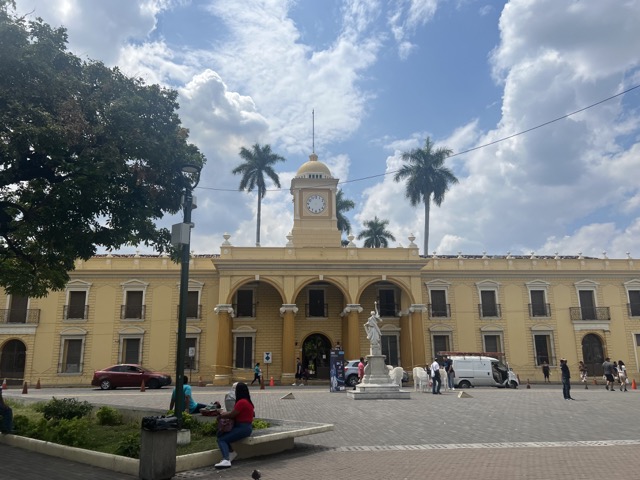
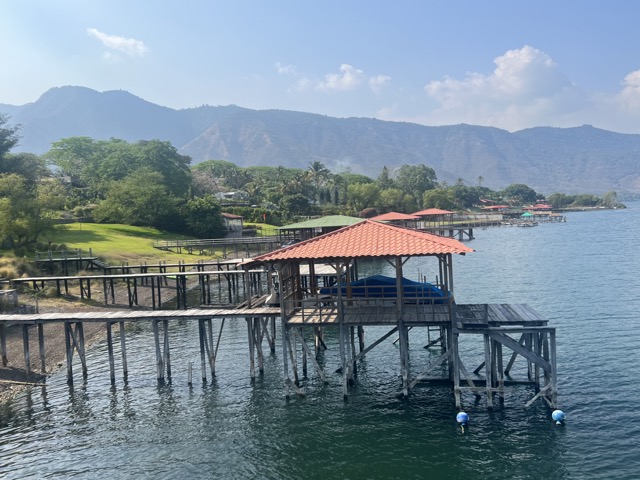
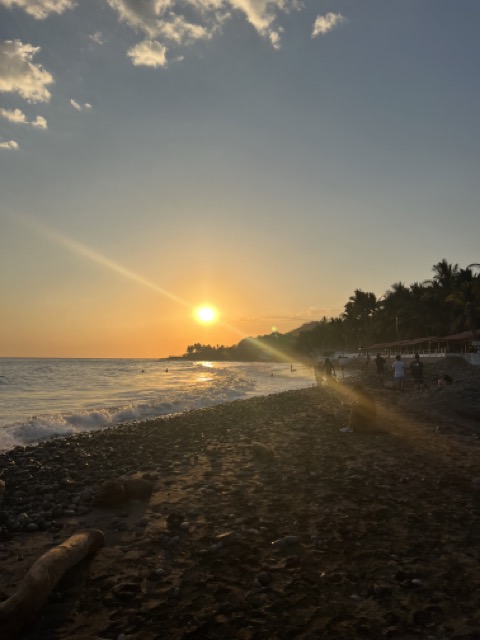
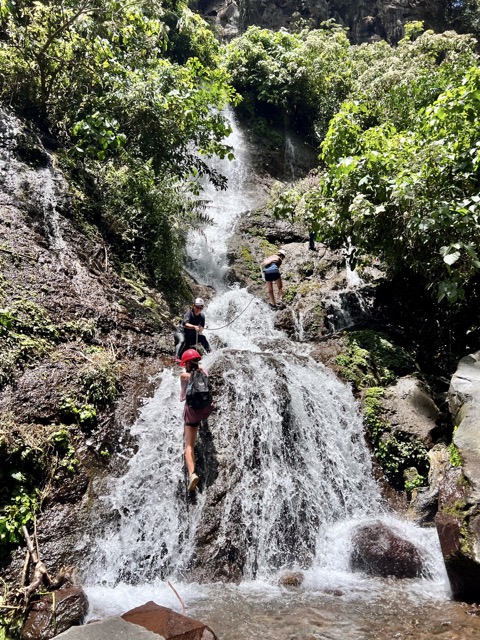
When To Go
Seasons:
May through October is rainy season. In general, I try to avoid Central America in rainy season just because I find the afternoons to be a bit of a wash (pun intended). Sometimes this can be a benefit though as there are less tourists but in El Salvador, I truthfully never found overcrowding of tourists to be a problem, especially outside of the beach towns.
If surfing is on your itinerary, which I highly recommend that it is, the waves are incredible and relatively consistent for (almost) any levels. In wet season, especially May and June, the waves can get pretty massive, which depending on your level could be a good or bad thing.
Weather:
The sun is strong with decently humid days, especially at the beach. It was a lot fresher in the towns along The Ruta de las Flores or by the lake/Volcán Santa Ana as the altitude changes. Most hostels have decent AC, but I would say this should be a requirement when looking for accommodations.
Insects:
Bring bug spray or long pants/sleeves. I am personally not a fan of bug spray but some long pants in the afternoons, especially near Lago Coatepeque, went a long way when the bugs came out around 4 or 5pm.
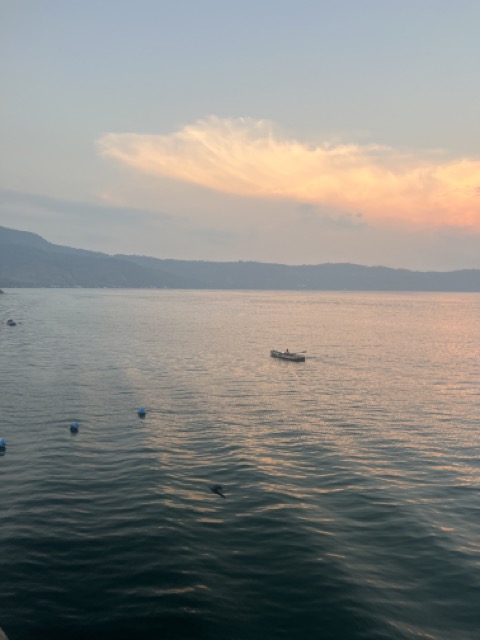
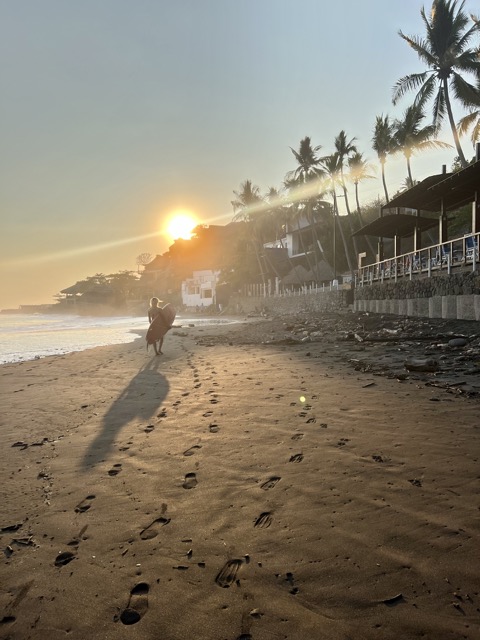
What To Do
Volcán Santa Ana: Climbing the volcano with the sulfuric turquoise blue water lying within its crater is a must do. Read more about this excursion here
Surf: El Salvador is a world class surf destination. With international competitions, attracting people who really eat/breath/sleep surfing. In contrast to many dorm room experiences, it’s not uncommon to see people waking up at 5/6am to get in a morning session. Though I believe there are better places to learn if you’re a complete novice, once able to tackle green waves (not the white foam), El Salvador is unparalleled. Read more about Surfing here.
Yoga: Where there’s surf, there’s likely yoga. Balancé in El Tunco has a really nice yoga class for $12. Both classes that I took were exceptional.
Ruta de las Flores: Explore by scooter, car, or bus. This route connects 6 towns and is famous for it’s blooming flowers between November and February. Even if going outside these months, the route is still gorgeous as you pass through the hills, farms, and small towns of El Salvador. Read more here about the Ruta de las Flores and how to optimize your time here
Waterfalls: There are many worth visiting. To name a few, a popular day trip to make from El Tunco is to see is Tamanique Waterfall. There are tours or you can explore yourself if you have a scooter or car. Another popular tour is the 7 waterfalls tour starting in Juayúa (transportation also provided from the beach at a higher price). It’s a way to see a few, well 7 to be exact, waterfalls in the area. The tour is fast paced and a bit adrenaline provoking as it requires a harness-less repel. The base of this hike is in Juayúa. Read more about it here. There are many other waterfalls in the area that can be visited independently or with a guide
Hot Springs: Similar to waterfalls, there a few to choose from on the spectrum from natural to curated hot spring spa “experience”. Examples include Santa Teresa Hot Springs, Los Ausoles with volcanic mud and steam baths, Las Cascadas de Tamanique, and Ataco Hot Springs
Tour a Coffee Plantation: The coffee in El Salvador is delicious. A coffee expert I am not, but I do spend most of my time in Colombia, and El Salvador truly holds its own in the coffee game. There are tours offered from almost all tourist destinations. A popular being a combination of a coffee plantation and 3 waterfalls. Having taken a few coffee tours in other countries, I opted to do more of an independent tasting at a coffee shop in Juayúa called Bloom coffee. And by tasting I mean I just asked the owner what he would recommend drinking and followed his lead. The owner is incredibly welcoming and knowledgable. He showed us the whole science of making a good cup of coffee using local beans and specific equipment. Though, like most establishments in El Salvador, English is limited. If you don’t speak Spanish say “Que me recomiendas” for suggestion of something to try, and maybe use google translate to explain the type of coffee you like. We asked if a certain type of coffee was good and he said “I don’t buy bad coffee”. Truly a man who finds pride in what he does.
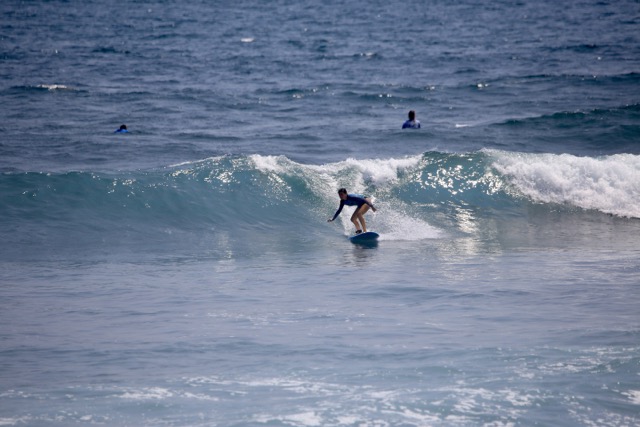
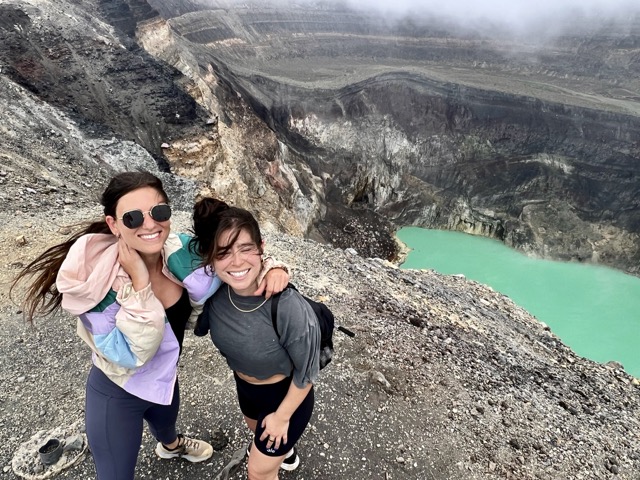
The Food
Pupusas: You won’t go far without seeing a pupusaría. For about 60 cents to 1 dollar, you can have your pick of the filling of these stuffed tortilla/corn cakes. Most fillings include cheese, with a variation of beens and meat. I’ve even seen dessert pupusas with chocolate and strawberries. Various regions make their pupusas slightly different, as I found them to be more thin and crispy in the Ruta de las Flores region and more doughy by the beach. The best that I had were at the Nahuizalco market where you can elect dough made of corn (the typical preparation), rice, or yuca. And the best part of pupusas are the cabbage and salsa that it’s served with. The salsa isn’t spicy, it always seems to spill out of the jar very fast, but it’s also a helpful agent to cool down the piping hot pupusas.
Yuca: A mashed potato consistency served on a banana leaf with various vegetables, sauces, and meat. We bought it from a street food cart so it was made in front of us and was easy to modify without meat, though this modification did not come without judgement from the woman serving it.
Tamales: Banana leaf wrap with meat and/or vegetables inside.
Sopa de Gallina: I don’t eat meat, so I didn’t try this, but I saw signs for it everywhere.
Street Snacks: This includes sandwiches, hot dogs, and fries filled with various meats of mysterious origin, fried on the grill, and showered/bathed/drowned in mustard and ketchup. It’s very economic, $2 for a massive sandwich, but for sure not diet nor veg friendly. You can also find sweet drinks and desserts on the street like horchata and rice pudding, sometimes in buckets and other times sold in individual plastic bags.
Fruit: The Mangos were great. For ~$1 you can get a whole bag of sliced mango.
Pizza: Salvadorians love pizza, especially fast food pizza like Papa Johns and Pizza Hut, but you can also find pizza of the more hand-crafted variety in restaurants as well.
Vegetarian Friendly/Health Food: The beach is where you’ll find a high concentration of health food shops which have many smoothies, juices, salads, etc. See all of my favorite spots in the post linked here. Many typical Salvadorian restaurants will make a veggie plate upon request, even if it’s not on the menu (pictured below).
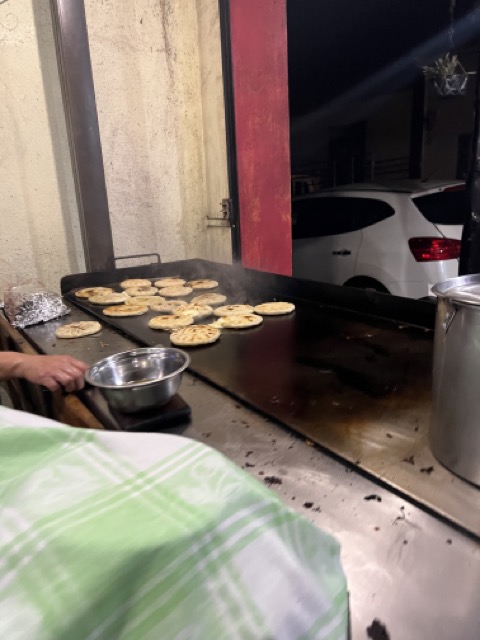
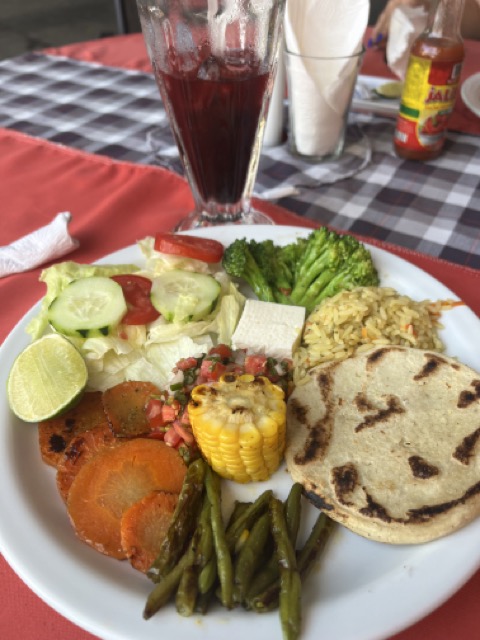
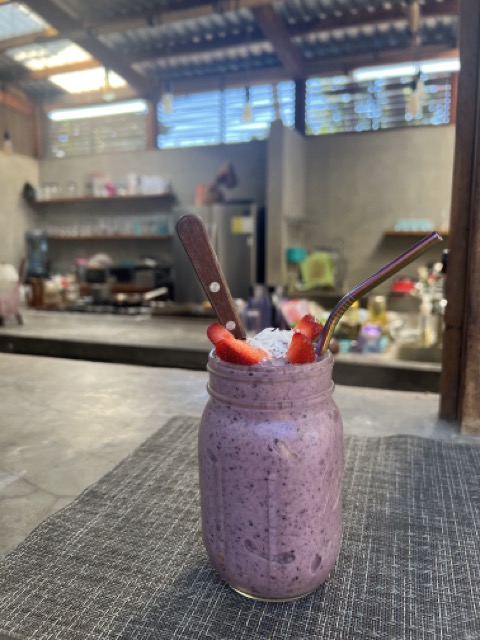
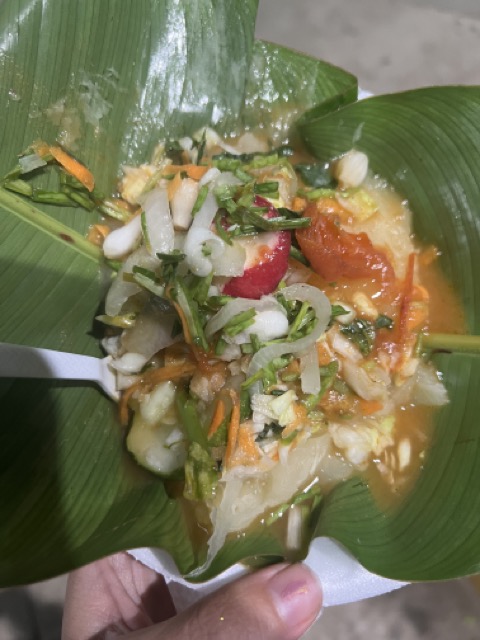
Currency
US Dollar is the most widely used currency. Having small change is preferable and a constant struggle as many places won’t break larger bills. Bitcoin is also an official currency, technically speaking, though I wouldn’t count on it as a main form of currency as the infrastructure isn’t entirely there.
Cash is king. ATMs are relatively easy to find and function well. Some accommodations and shops will take apple pay, some will require the physical credit card (tarjeta fisica). Most of the larger and fancier hostels/hotels will allow payment by card, but some may charge a fee.
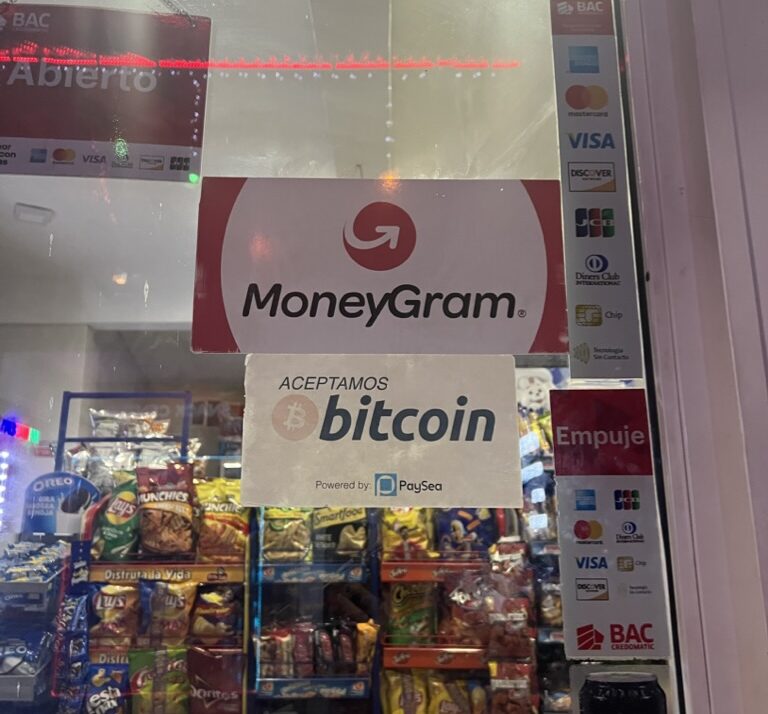
Transportation
Bus: The public bus, also called the chicken bus, like many other Latin American countries are old and very worn US school buses, spruced up with a colorful pain job. These buses, though extremely economic, can get quite cramped. They take a fair bit longer than driving by Uber or Taxi as many buses aren’t in the best condition and will stop frequently to pick people up along the route.
Scooters: Another option is to rent a scooter and helmet in Santa Ana or by the beach. It may take some asking around. The scooters I saw were relatively big, maybe too big for my comfort, especially not having the longest of legs, but they drive similar to a vespa.
Car Rental: Cars can be rented at the airport, San Salvador, and even at the beach. Cars give you freedom and comfort of traveling on your own timeframe, stopping along the way at leisure, and transporting your bags easily. It does however come with a more hefty price tag and the responsibility of maintaining a car, as I’ve read about people dealing with damages while chasing waterfalls and what not. Main roads are well paved though and everyone has a story of a kind local helping them change a tire.
Uber: Uber exists and is typically cheaper than a taxi. They function quite well from the airport, but in smaller towns and even down the beach, they are hit or miss with availability. Having a number to call and arrange a ride is important if you’re short on time. And once you snag a good one, ask the driver for their contact for the future. They’ll be happy to arrange a ride for Uber prices outside the app. In Santa Ana, I learned that Ubers will call you to confirm your payment method and will cancel if you aren’t paying cash. For this reason, it’s best to change your payment method to cash to help out your driver.
Taxi: Every local person “knows a guy”. For this reason, taxis are fairly easy to arrange.

Saftey
It’s no secret that El Salvador has a reputation of being dangerous. Where the conversation unfortunately stops is that tourists are not and never were the target. As mentioned, the government cracked down on gang-related violence. Arresting anyone and everyone involved. Now, El Salvador is incredibly safe. I never really experienced cat calling, I walked around with my phone in plain sight, and every taxi/uber driver was incredibly kind. Even the customs agent spent 10 minutes asking me where I learned Spanish, about where I’ve traveled, which country I liked best, etc. And not out of national security but out of genuine interest at 6am. Remember that in regards to “news worthy” it’s much more likely to hear about when a country is deemed dangerous vs. when it actually becomes much safer.
Simultaneously, Salvadorians have a reputation for being incredibly nice. Admittedly, this is what drew me to El Salvador in the first place. Someone I met in Panama told the story, “I was in a grocery store and a random shopper asked what I was looking for and they personally helped me find the eggs”. I typically don’t need assistance to find eggs, but the story intrigued me. It’s true, the people in El Salvador are nice. I think what makes them different is their excitement to be able to go out of their way to help you and the way they look out for the people who visit their country
Two stories on the topic to reinforce my point:
1. We were at a restaurant in El Tunco. A tourist couldn’t find his phone and insinuated that someone could have taken it off of the table. The waiters felt so horrible that they stopped everything to search for his phone. The phone was found under his seat as it dropped from the table.
2. I met a couple that has been living in El Salvador part time for the past 10 years. They said only once, someone stole a few small items like a lighter and a bit of cash from their balcony. The town’s “elders” found the teenager who stole it, made him return the items, and took turns scolding him explaining that they do not mess with the tourists. In the most basic of terms, tourism brings money to their town, making it unsafe would be a disservice to the entire community
I hope this was a thorough overview, read my other blogs for more in depth information. I thoroughly enjoyed my 2 weeks spent in El Salvador and I hope you do to!